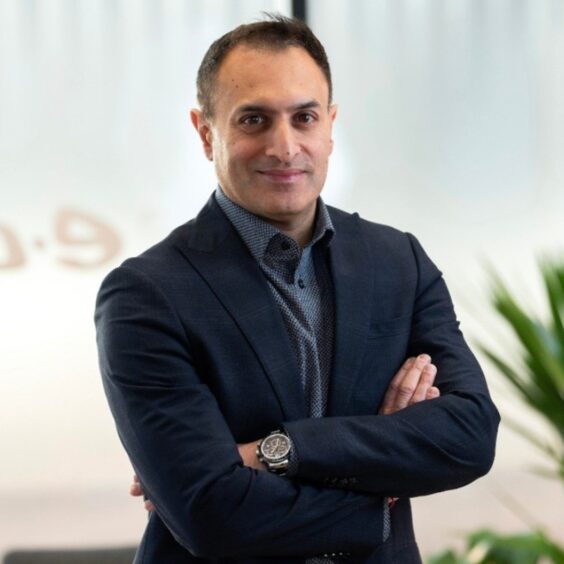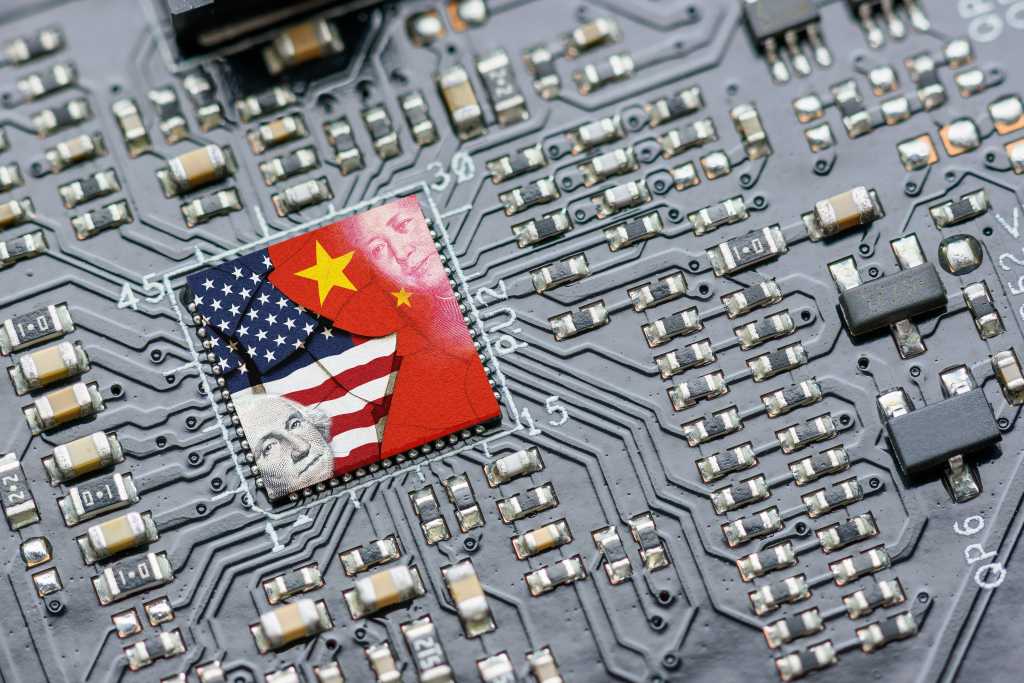Graeme Wood has joined Aberdeen-based offshore energy consultancy Sheret Energy Offshore as its executive chairman.
Wood previously held senior positions with companies such as Technip, AKER QSERV, Vroon, Bibby Offshore, Rever Offshore and Caledonian Maritime Assets.
His appointment comes with a new strategic investment in the company, with Wood becoming a 50% shareholder.
This strategic partnership reflects a shared vision for the company’s growth and innovation in the offshore energy market.
Over the next 12 months, Sheret Energy Offshore CEO and founder David Sheret and Wood will co-invest a six-figure sum into the business, with plans to create up to 10 new jobs in 2025.
This investment will also support the development of a software service tailored to the mergers and acquisitions (M&A) sector, further expanding the company’s footprint and offerings.
Looking ahead, the company is also preparing for a significant equity raise in 2026 to drive further expansion.
Wood said: “David’s entrepreneurial drive and bold vision for the company resonate deeply with me. Together, we aim to build a market-leading business that not only delivers exceptional value to its clients but also fosters innovation and sustainable growth.
“I look forward to playing an active role in shaping the leadership team, supporting operational delivery, and contributing to the company’s long-term success.”
 © PA
© PAJonathan Brearley has been reappointed as CEO of Ofgem, with his tenure to run from 1 February 2025 until 31 January 2030.
Energy secretary Ed Miliband also extended the terms of two non-executive directors, Myriam Madden until 31 March 2025, and Barry Panayi to 16 March 2027.
Brearley was appointed as an executive member of the Ofgem board in 2018 before becoming its CEO on 3 February 2020.
This follows his previous appointment as executive director for systems and networks in April 2018.
The UK government previously announced plans to strengthen Ofgem, giving it more power to support consumers and growth and innovation in the energy sector.
 © Supplied by Aurora Energy Servic
© Supplied by Aurora Energy ServicKatie Jordan has been appointed as chief commercial officer for Inverness-based contracts and procurement specialist Aurora Energy Services.
Jordan joined the company from global energy company TechnipFMC where she was a member of the UK leadership team and held the position of supply chain manager.
She said: “My role will be contract focussed, providing commercial oversight from supply chain through to the end-clients and ensuring Aurora achieves best position while mitigating risk.
“I was aware of [founders] Doug and Michael Buchan’s previous business ventures and am excited to be joining a relatively new enterprise which is hugely ambitious and focussed on international growth.”
The company recently outlined ambitious growth plans, aiming to recruit 30 new employees before the second half of 2025.
The move forms part of an expansion drive Aurora has been on across 2024. The group acquired US wind turbine blade repair and maintenance specialist Cotech Group in its first international takeover late last year.
The company also moved into South America with the acquisition of Chilean company Altitec Blade Services.
Aurora CEO Doug Duguid said: “Katie brings a great deal of operational experience in the oil and gas sector which will be an important asset as we continue to grow our business in domestic and international markets.
“As we operate in a number of different sectors and end-markets, it is important to manage contractual and commercial risk, and Katie’s lengthy experience in leading large-scale and complex contracting structures will be invaluable.”
 © Supplied by E.On
© Supplied by E.OnVijay Tank has been appointed as chief commercial officer for E.ON Energy Infrastructure Solutions (EIS) UK and has joined the E.ON UK board.
Tank has worked at E.ON for over 13 years, having most recently served in its Nordics sections, including as chief operating officer for that division since December 2023, and as chief financial officer for Sweden.
Writing on LinkedIn, Tank said: “Leading the clean energy transition is a subject very close to my heart and I’m incredibly passionate about transforming how energy is generated and supplied in an affordable, reliable and sustainable way.
“These are the challenges that impact cities, businesses, and individuals most, and I can’t wait to get started back in the UK this February to help deliver solutions that truly make a difference.
 © Supplied by Energy UK
© Supplied by Energy UKPaul Spence has been appointed as the new independent chair of Energy UK’s vulnerability commitment.
Spence, who recently stepped down as director of strategy and corporate affairs at EDF after 40 years working in the energy industry, will take over from Steve Crabb, who has held the role since its inception in 2021, on 1 February 2025.
Energy UK’s vulnerability commitment is a voluntary initiative where 13 supplier signatories – together covering more than 95% of the domestic retail market – pledge to go further than existing obligations in identifying and supporting vulnerable customers.
Spence will chair the expert independent panel that scrutinises suppliers on their performance each year through evidence-based assessments.
He will also be supported by an advisory board that will help the chair in ensuring the vulnerability commitment is kept up to date and evolves to reflect the latest trends in support for customers in vulnerable circumstances.
Spence said that the role is “a great opportunity to identify the extra steps and improve the support energy suppliers give to customers in vulnerable situations.
“With an ageing population, rising mental health concerns, low growth, high energy prices and debt levels – as well as the need to invest in energy-saving and low-carbon technologies – this support is more vital than ever.”
 © Supplied by Conntrak Catering
© Supplied by Conntrak CateringAndrew Thomson has joined Conntrak Catering, a provider of catering services in the offshore oil and gas, marine and renewables market, as its managing director for North Sea and Gulf of Mexico.
He previously worked as managing director for Aramark’s global offshore business for the last decade.
His appointment comes as Conntrak looks to focus on the North Sea and Gulf of Mexico for the next phase of its structured expansion.
Conntrak has offices in Westhill, Aberdeen as well as Houston, Texas. Thomson will head up the dual location operationally due to his knowledge of both markets, the client base, the supply partners and employee relations.
He said: “The opportunity to grow our Conntrak portfolio across the North Sea and Gulf of Mexico is really exciting.
“I’m joining a team who have a 100% focus on offshore hotel & catering services. Add to this I have direct access to the shareholders to engage on strategy means that we can make informed decisions with a pace that is refreshing, allowing us to nimbly respond to market changes, client needs and opportunities as they arise.
“With the level of maturity in the market we feel there is a clear potential to unlock innovative solutions that will drive the highest standards of service and quality by attracting the best people to join our team. Being commercially creative in this environment will deliver a real alternative for clients in both the North Sea and the Gulf of Mexico.”
 © Supplied by Dominic Emery, a for
© Supplied by Dominic Emery, a forDominic Emery, a former chief of staff at BP, has been appointed to the technical advisory board (TAB) of Cambridge-based biofuels company HutanBio.
Emery’s 36-year tenure at BP ended in 2022. Since retiring, he has focused on advancing the energy transition, providing strategic guidance to large energy companies, startups, and consultancies.
He stated: “There’s a clear gap in low-carbon fuels for hard-to-abate transportation sectors. HutanBio’s innovative approach provides a compelling solution to this pressing need.
“I am eager to contribute strategic insights into potential customer segments and techno-economic pathways. Our goals are clear: secure near-term customers, drive initial revenues, and unlock long-term strategic opportunities in key demand sectors – and be the stand-out biofuel for the tough transportation sectors.”
In addition, HutanBio has added professor Alex Routh, a leading expert in colloid science who serves as a professor at the University of Cambridgem and Paul Beckwith, who has served in leadership roles at BP and Butamax Advanced Biofuels, to the TAB.
This milestone aligns with the company’s ongoing mission to decouple long distance transportation from fossil fuels, by leveraging its innovative HBx sustainable fuel technology.
HutanBio founder and chief strategy officer Dr John Archer said: “Having these industry luminaries choose to join our journey speaks volumes about the potential of our HBx technology to transform sustainable aviation and marine fuels.
“Their guidance and expert insight will provide the business with real-time value and be instrumental in accelerating our path to market.”
Power Moves is kindly sponsored by the good people of JAB Recruitment.
Recommended for you

Ørsted replaces Mads Nipper as CEO




















